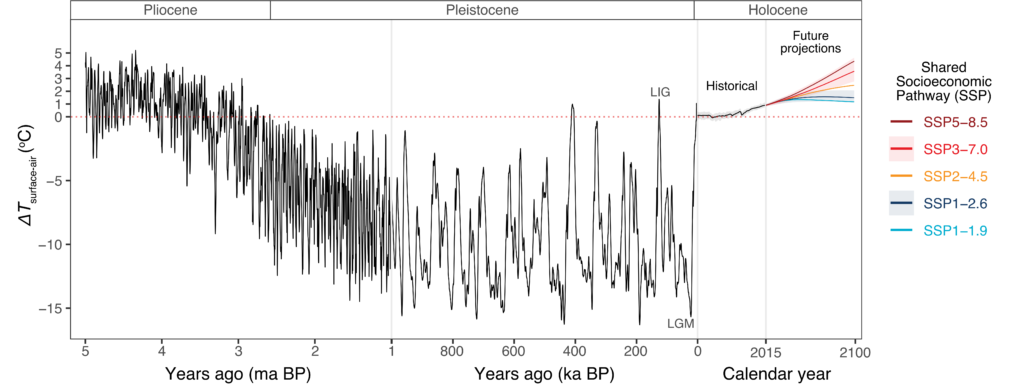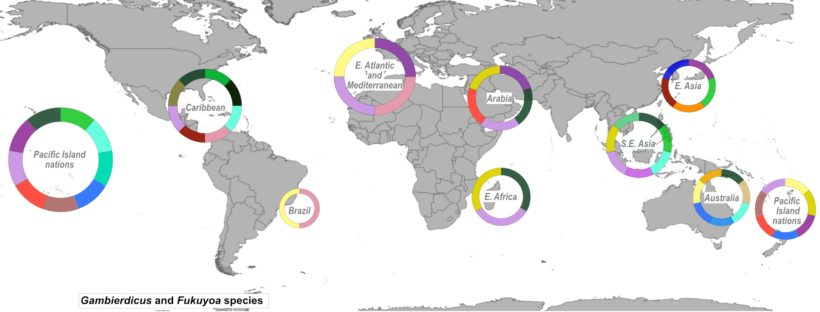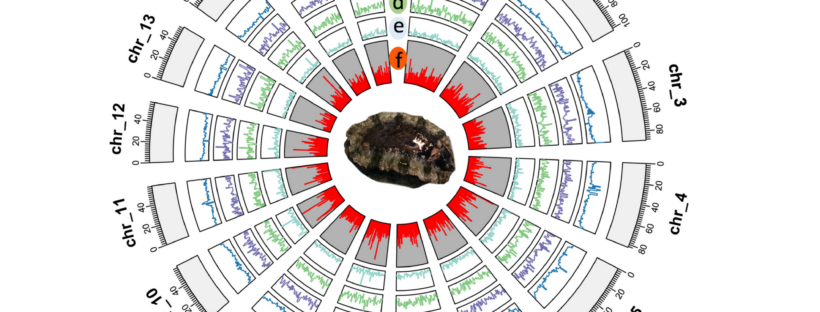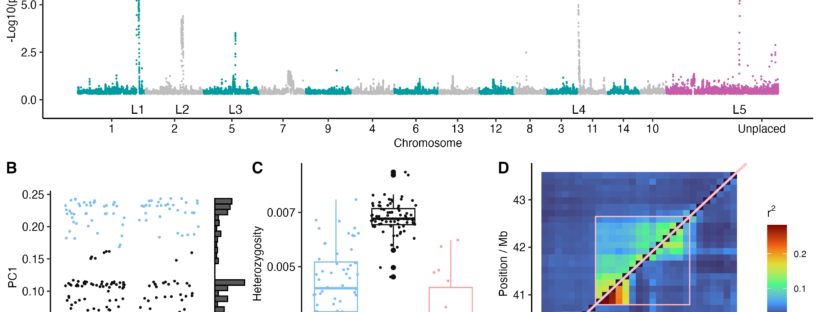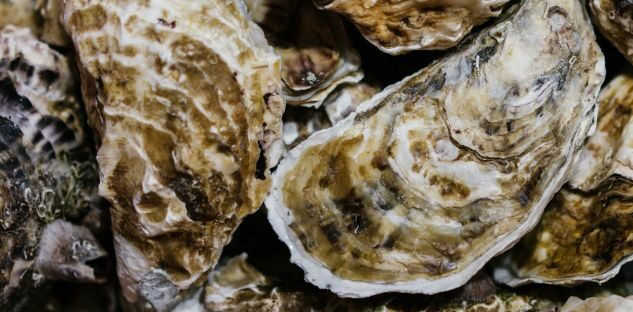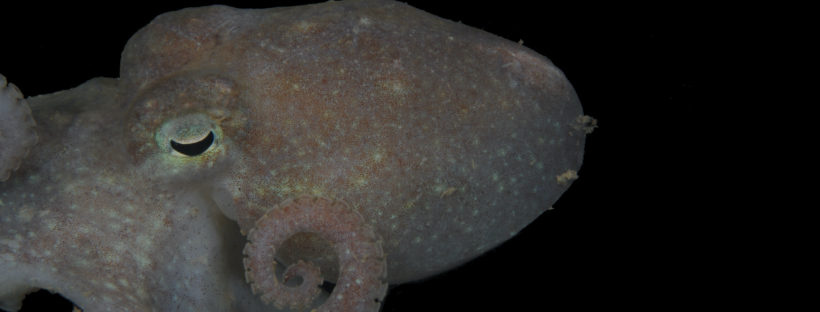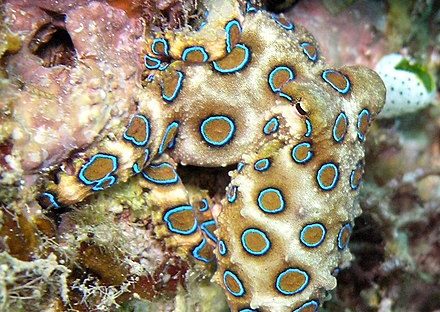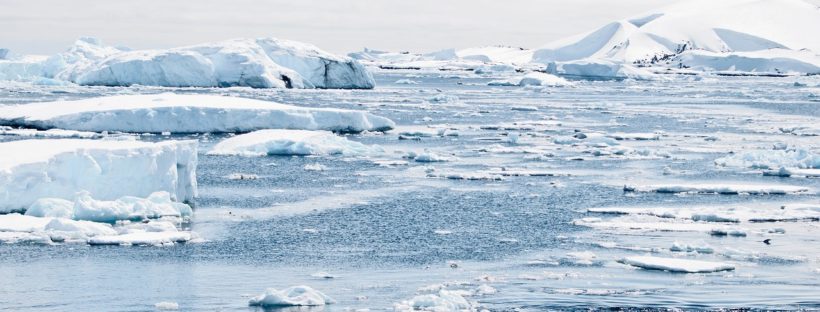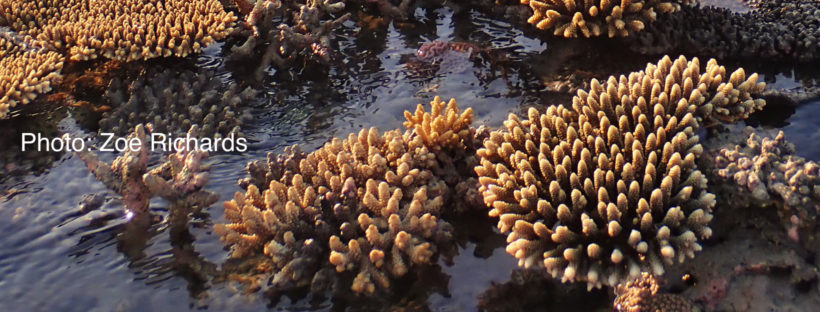Joe’s comprehensive review on ciguatera poisoning, just published in Harmful Algae, offers an in-depth examination of the ecological dynamics of the toxic dinoflagellates Gambierdiscus and Fukuyoa. The paper evaluates current detection methods and provides innovative solutions to enhance monitoring and reduce the risk of ciguatera poisoning. This review serves as a valuable resource for researchers and practitioners aiming to understand and mitigate the impact of the worlds most prevalent non-bacterial seafood illness.
Category: Publications
In pursuit of the perfect abalone genome
Roy’s beautiful genome paper is published today in Nature Scientific Data. Using a combination of Hi-Fi sequencing and Omni-C scaffolding, Roy managed to obtain an extremely high quality genome for this species. Even, better, this genome includes gene models generated with PacBio Iso-Seq making it by far the best abalone genome resource to date. The paper is titled, Chromosome-scale genome assembly of the tropical abalone, (Halitosis asinina)
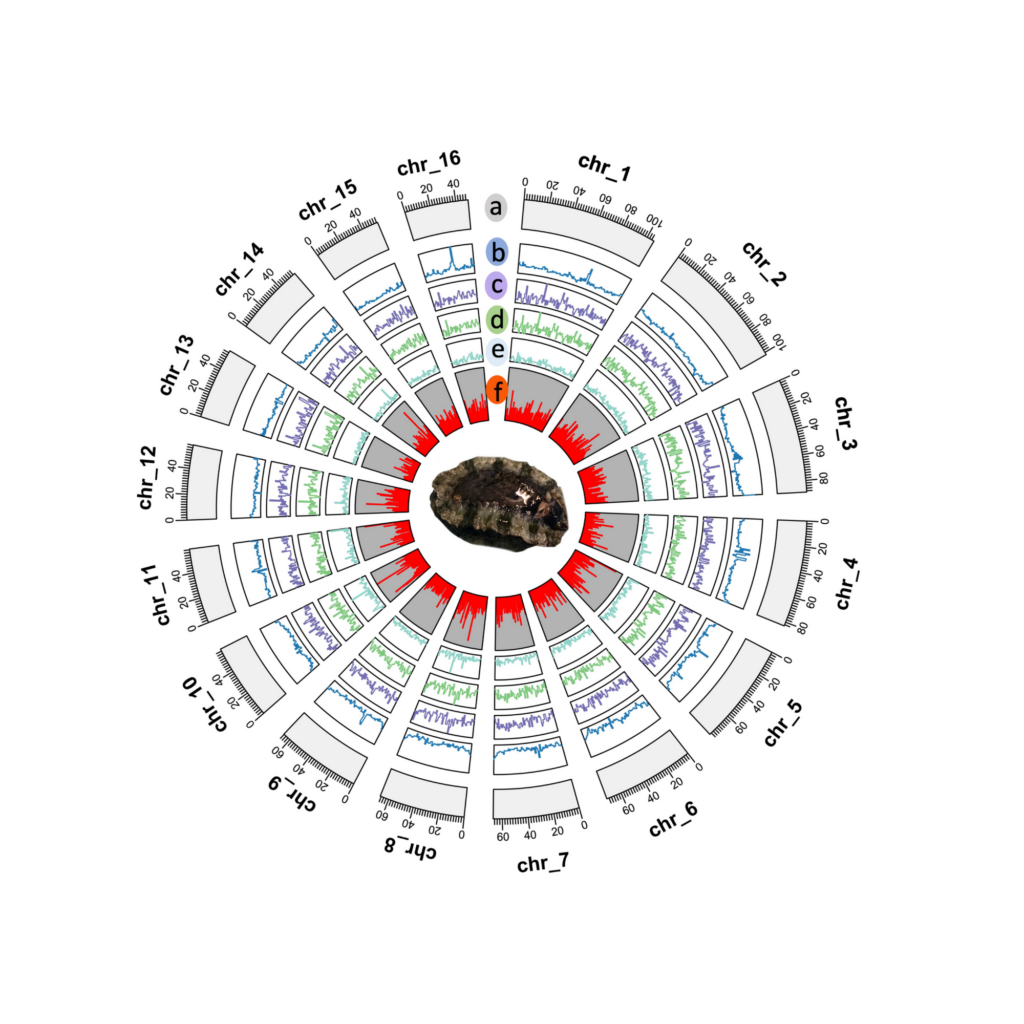
Chromosomal inversions harbour deleterious mutations in the coral, Acropora kenti
A new paper led by Jia shows that there are at least five large, highly polymorphic chromosomal inversions in Acropora kenti, a widespread coral on the Great Barrier Reef. This paper highlights the potential importance of structural variation in corals, and the need for new approaches to characterise it. Published in Molecular Ecology.
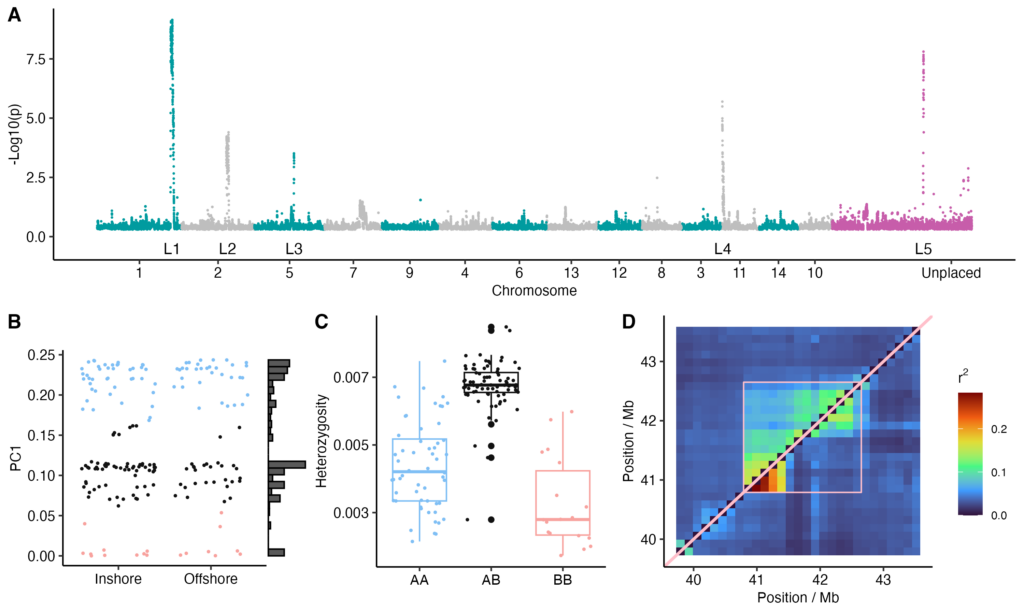
Tropical blacklip rock oysters are great at gobbling up nutrients
Ben Rennie led a great study as part of his Masters project to investigate filtration rates and the bioremediation potential of the tropical blacklip rock oyster, Saccostrea lineage J, which was published in Aquaculture Environment Interactions. The study found that the Blacklip Rock Oysters significantly reduced total nitrogen, total phosphorous, total suspended solids and chlorophyll a from prawn pond effluent. In addition the oysters have a filtration rate three to five times higher than other frequently cultured oyster species suggesting that they may be well suited to biofiltration roles.
JCU highlighted the story in a media release and a feature article the paper has led to interest in the oysters ability to provide reef credits.
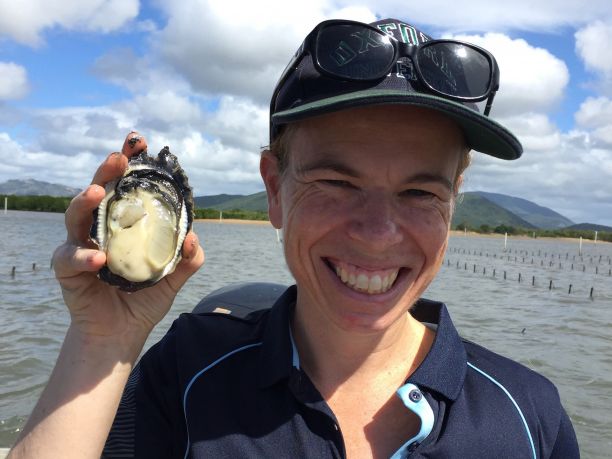
Jan with a Tropical Blacklip Rock Oyster at Bowen Fresh Oysters.
Octopus DNA predicts future West Antarctic ice sheet collapse
Sally Lau led a fantastic study published in Science which used octopus DNA to discover that the West Antarctic Ice Sheet (WAIS) likely collapsed during the Last Interglacial period around 125,000 years ago – when global temperatures were similar to today. This provides the first empirical evidence that the tipping point of this ice sheet could be reached even under the Paris Agreement targets of limiting warming to 1.5 – 2 degrees C.
This research solves a long-running mystery regarding whether or not the WAIS collapsed during the Last Interglacial. This was a period when global average temperatures were 0.5 – 1.5 oC warmer than preindustrial levels, but global sea level was 5 – 10 metres higher than today. What makes the WAIS important is that it’s also Antarctica’s current biggest contributor to global sea level rise. A complete collapse could raise global sea levels by somewhere between 3 and 5 metres.
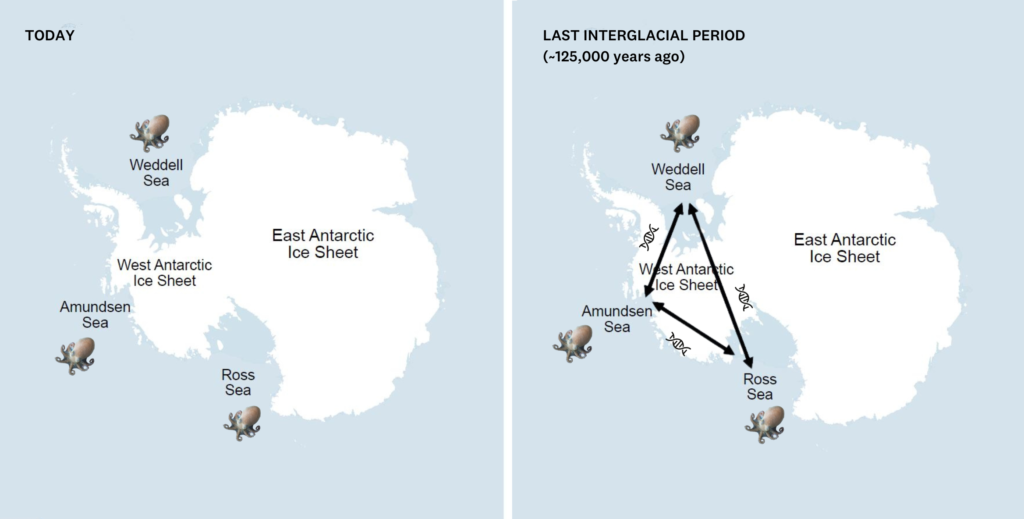
In the study we employed a novel population genomic approach to answer this question. By employing demographic modelling and comparing the genetic profiles of Turquet’s octopus found in the Weddell, Amundsen, and Ross seas enabled detection of genetic connectivity dating back to the Last Interglacial. This would only be possible if a complete collapse of the WAIS occurred during the Last Interglacial, opening seaways linking the present-day Weddell, Amundsen and Ross seas. This would have allowed octopus to travel across the opened straits and exchange genetic material, which we can detect in the DNA of today’s populations.
This research was interdisciplinary, bringing together geneticists, physical scientists and geologists and was only possible through international collaboration and the use of samples collected over a 30 year time period. Our work was supported by the Australian Research Council, the Australian Academy of Science, an Antarctic Science International Bursary, the SCAR INSTANT programme, Ministry of Business Innovation & Employment, NZ, the Antarctic Science Foundation, Australasian eResearch Organisations and Suomen Akatemia.
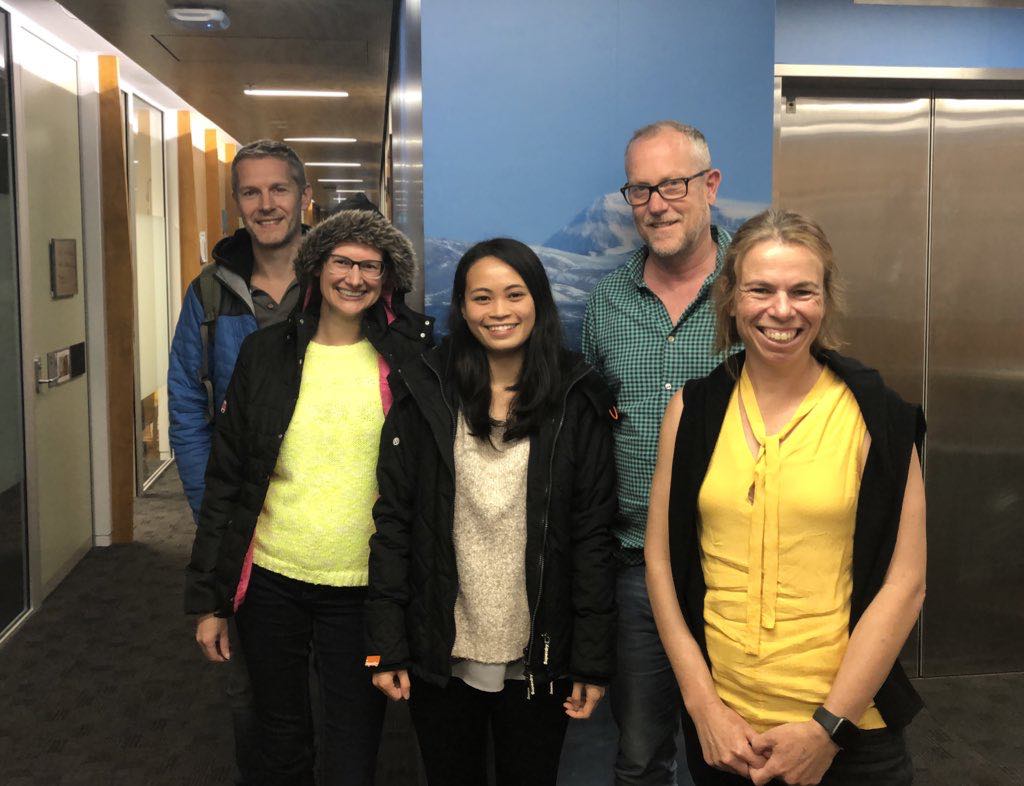
Interdisciplinary team work makes the dream work! From L to R: Nick Golledge (Victoria University of Wellington), Nerida Wilson (University of Western Australia), Sally Lau (James Cook University), Tim Naish (Victoria University of Wellington) and Jan Strugnell (James Cook University).
We are delighted with the media attention our paper has received! Some of our favourites include First Dog on the Moon, The New York Times, The Washington Post and CNN. You can also read more about our research in an article we wrote for The Conversation.
There are many more blue-ringed octopuses than you think there are…..
Brooke Whitelaw led a fantastic study investigating species diversity in the iconic blue-ringed octopus genus, Hapalochlaena. Using genome-wide SNP data and mitochondrial loci, Brooke found 11 relevant taxonomic units – likely all species, suggesting MUCH greater diversity than is currently described! The origin of the genus Hapalochlaena was predicted to be in the Indo-Australian Archipelago and is older than you might thing ~30 mya.
The paper is published in Molecular Phylogenetics and Evolution and you can access it here.

Fig. 2. Delineation of Hapalochlanea species boundaries and genetic structure throughout the Indo Pacific using 10,346 SNPs: (a) SVDQuartet phylogeny of Hapalochlaena throughout the Indo Pacific generated using 10,346 SNPs, coloured branches represent putative taxonomic units A-K: brown (A/Southern coast of Australia), lilac (B/NSW), apple green (C/Taiwan lined), pink (D/Taiwan ringed), light orange (E/Darwin, NT & Kimberly & Exmouth, WA), red (F/Timor Leste), dark orange (G/G* Great Barrier Reef, QLD), purple (H/Cape York, QLD & Shark Bay, QLD) light blue (I/Deep water Yeppoon, QLD & North West, WA), dark blue (J/North West Shelf, WA) and light green (K/Ningaloo, WA). Posterior support values > 0.90 present on nodes. Bars at terminal branches indicate admixture of OTUs inferred using STRUCTURE, colours approximately correspond to OTUs. Lined box adjacent to OTU indicated lined markings while, OTUs without a box exhibit ringed markings. (b) Species delineation using the mitochondrial COI gene. Bayesian phylogeny (MrBayes) of Hapalochlaena throughout the Indo Pacific is coloured according to OTU with black used to represent taxa included from NCBI. Boxes represent putative species in accordance to sPTP, GYMC SC (strict clock) and GYMC RC (relaxed clock) methods. Boxes with diagonal lines represent specimens with lined markings as opposed to rings present in all other specimens. (c) Arrangement of samples according to the first two principal components of a PCoA based on SNP data generated using the dartR package. (d) Map of sample locations coloured by organisational taxonomic units A-K. (For interpretation of the references to colour in this figure legend, the reader is referred to the web version of this article.)
Genomic evidence for West Antarctic Ice Sheet collapse during the Last Interglacial Period
The latest in Antarctic research from the Marine Omics lab, Sally, Ira and Jan used a novel genomic approach to answer if the West Antarctic Ice Sheet (WAIS) had collapsed during the Last Interglacial period, and they did so by looking into the genomic loci of an Antarctic octopus (Pareledone turqueti). They found a clear, distinct connectivity between Ross Sea and Weddell Sea, dating it back to the last interglacial period, that is different from the signal of the octopus’s general circumpolar movement around the continent. By comparing the genomic data against contrasting hypothesised scenarios via demographic modelling, including no, partial or complete WAIS collapse in the past, their findings suggest the Ross and Weddell connectivity was only possible if the WAIS completely collapsed and opened the seaway connecting the two basins.
A focus of Sally’s PhD research this paper is available as a pre-print on bioRxiv and has certainly made waves, with an interview in The Guardian, IFLScience and has been re-imaged by the creator First Dog on the Moon! Their research is a successful transdisciplinary example demonstrating that only by bringing different disciplines together, we can have the best shot to help solving the current climate change.
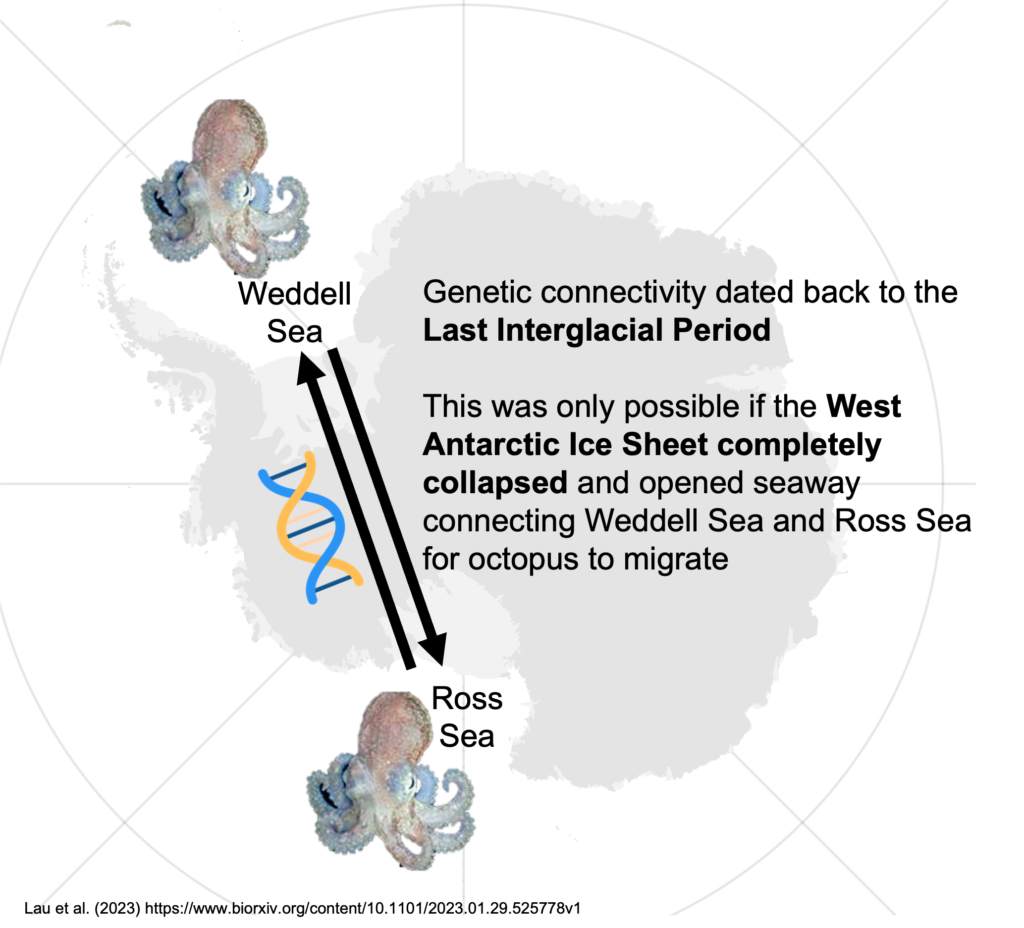
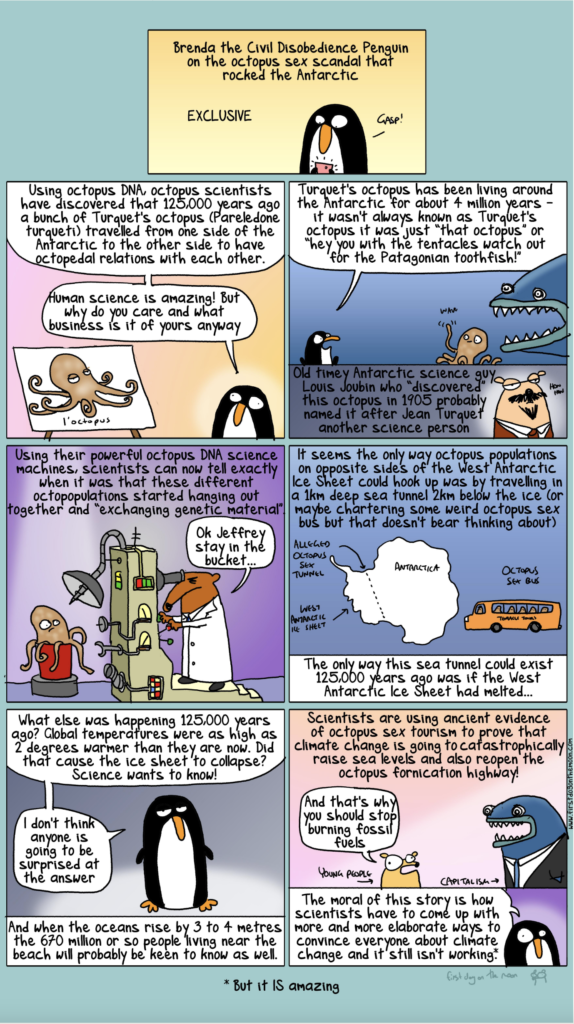
DNA reveals the past and future of coral reefs
A new paper by Jia in Molecular Biology and Evolution showcases the power of whole genome sequencing to understand adaptive evolution in corals. Thanks to our collaborators in Western Australia we were able to obtain samples for deep WGS on 75 corals, including samples from the inshore Kimberley reefs and two offshore atolls. The results revealed very recent divergence driven by founder effects and strong selection, especially in the inshore reefs.
Paper: https://doi.org/10.1093/molbev/msac201
Press Release: https://www.coralcoe.org.au/media-releases/dna-reveals-the-past-and-future-of-coral-reefs
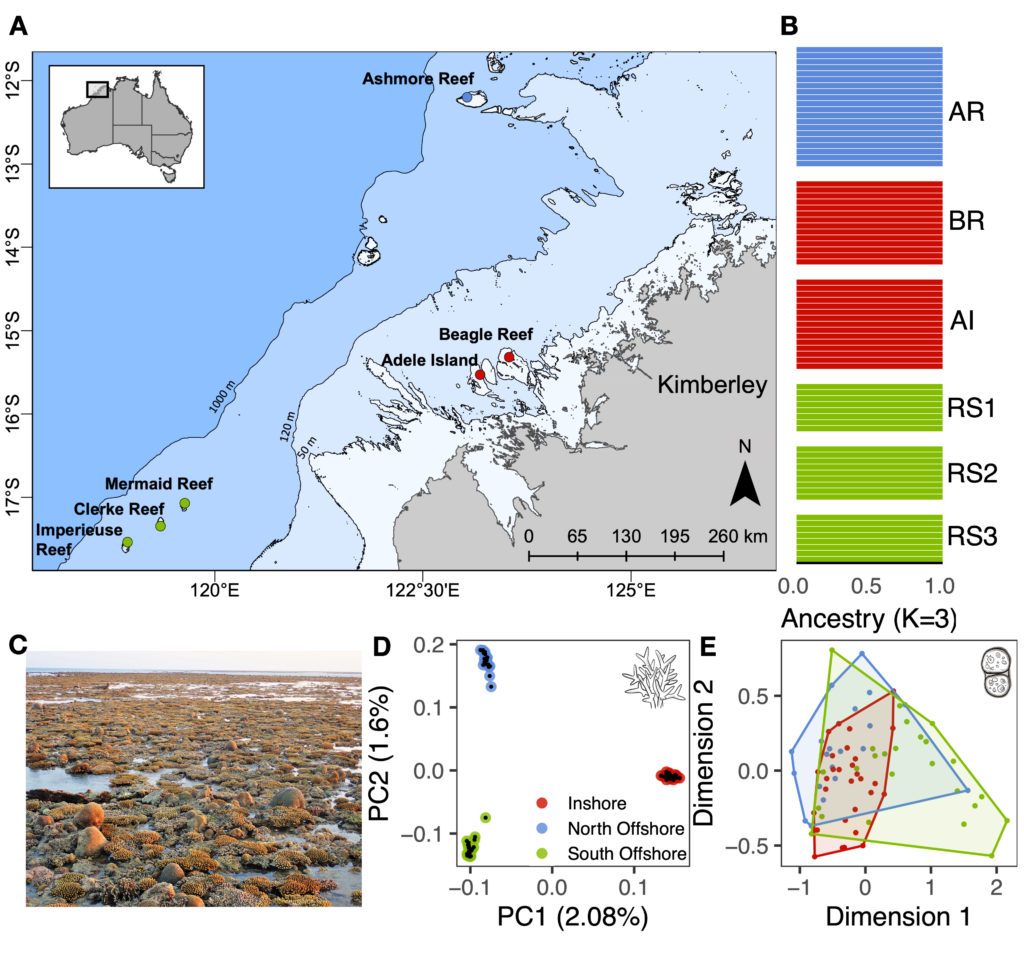
Emerging biological archives can reveal ecological and climatic change in Antarctica
Jan led a paper with co-authors from Securing Antarctica’s Environmental Future (SAEF) to highlight the utility and power of biological archives to understand past ecological and climatic change in Antarctica. Biological archives included extant moss beds and peat profiles, biological proxies in lake and marine sediments, vertebrate animal colonies, and extant terrestrial and benthic marine invertebrates. The paper highlights how emerging biological archives complement other Antarctic paleoclimate archives (e.g. ice cores) by recording the nature and rate of past ecological change, the paleoenvironmental drivers of that change, and constrain current ecosystem and climate models. Significant advances in analytical techniques (e.g., genomics, biogeochemical analyses) have led to new applications and greater power in elucidating the environmental records contained within biological archives. The paper highlights how these emerging biological archives will significantly expand our understanding of past, present, and future ecological change, alongside climate change in Antarctica and at the Southern Ocean.
A video about the article made by GCB: https://twitter.com/GlobalChangeBio/status/1561850857334923269
Link to SAEF article about the paper: https://arcsaef.com/story/accessing-earths-memories/
Link to paper: https://onlinelibrary.wiley.com/doi/10.1111/gcb.16356
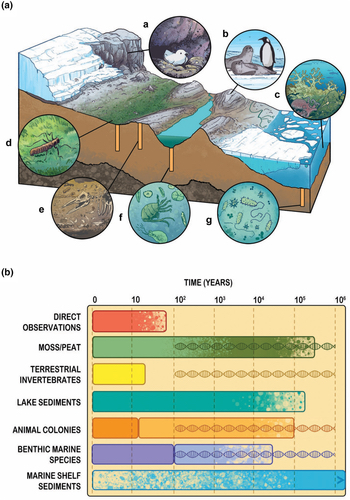
Is the Southern Ocean ecosystem primed for change or at the cliff edge?
New editorial by Sally and Jan in Global Change Biology (full article here), explores the unprecedented environmental risks and consequences that the Southern Ocean is experiencing from current climate change. They also outlined that knowing how benthic fauna persisted through environmental extremes in the past may inform future predictions. Right now, understanding and preserving current genetic diversity and connectivity between populations will give species the best chance to adapt.
